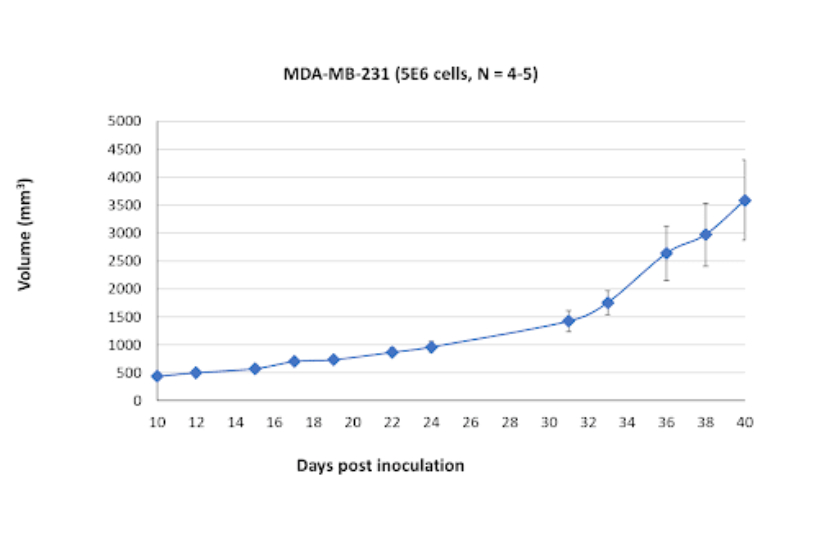About MDA-MB-231
The MDA-MB-231 cell line, established in 1976 by J.W. Shay and colleagues, originated from a tumor obtained from a 51-year-old woman diagnosed with metastatic breast cancer. These cells display a characteristic known as epithelial to mesenchymal transition (EMT), which is associated with the ability of cancer cells to undergo metastatic proliferation and invade surrounding tissues. In vitro, MDA-MB-231 cells adhere to the culture surface and grow as a monolayer. The MDA-MB-231 cell line is classified as “triple-negative” breast cancer. This means that these cells do not express the estrogen receptor, progesterone receptor, or HER2 protein.
Triple-negative breast cancer is known for its aggressive nature and resistance to hormonal therapies or treatments targeting the HER2 protein. The absence of these receptors limits the available treatment options for this breast cancer subtype. The MDA-MB-231 cell line exhibits invasive behavior and is highly prone to metastasis, making it a valuable model for studying the mechanisms and characteristics associated with metastatic breast cancer. Researchers can utilize these cells to investigate the underlying processes involved in cancer cell invasion and metastasis formation, providing insights into potential therapeutic targets.
MDA-MB-231 Tumor Kinetics in the SRG™ Rat

When implanted in SRG rats, MDA-MB-231 cells give rise to firm and well-defined tumors. This tumor model mimics the characteristics observed in the clinical context, providing researchers with an in vivo platform to study tumor growth and evaluate therapeutic interventions. The ability of MDA-MB-231 cells to form tumors in animal models further highlights their relevance for investigating breast cancer biology and developing potential treatments.
Products & Services
Xenograft Efficacy Studies
Includes collection of blood, tissues & tumor for ADME, PK/PD and analysis.
(Bi)weekly Tumor Sampling
Via fine needle aspiration (FNA). For longitudinal evaluation of drug exposure, histology and gene expression.
OncoRats
Cutting edge models optimized for engraftment.
Get help with your research by scheduling a call with Hera.
References (MLA):
- Kalluri, Raghu, and Robert Weinberg. “The Basics of Epithelial-Mesenchymal Transition.” The Journal of Clinical Investigation, June 2009, pubmed.ncbi.nlm.nih.gov/19487818/.
- Rubin , I, and Y Yarden. “The Basic Biology of HER2.” Annals of Oncology : Official Journal of the European Society for Medical Oncology, 2001, pubmed.ncbi.nlm.nih.gov/11521719/.
